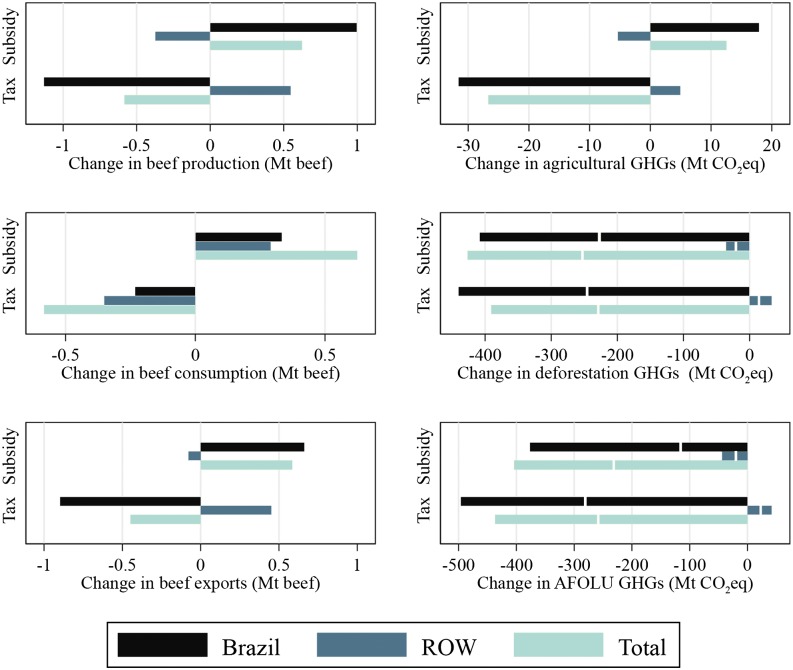Fig. 1.
Changes in agricultural output (Left) and AFOLU GHGs (Right) in the year 2030 caused by the tax and subsidy policy scenarios. AFOLU GHG emissions are agricultural GHG emissions plus deforestation GHG emissions. Emissions reductions are reported as negative numbers. Emissions increases are reported as positive numbers. For the AFOLU GHGs and the deforestation GHGs, the bars and the break lines, respectively, represent the upper bound and the lower bound of four distinct maps of the carbon density of vegetation cover investigated (9, 35–37). Either a tax on beef from conventional pasture in Brazil (T) or a subsidy for beef from semi-intensive pasture in Brazil (S) could substantially alter production and consumption of beef in Brazil and in the rest of the world (ROW). These changes are associated with considerable reductions in AFOLU GHGs. T reduces Brazil AFOLU emissions by 52% and total global deforestation GHGs by 24%. S reduces Brazil AFOLU emissions by 41% and total global deforestation emissions by 26%. In 2005, AFOLU GHG emissions constituted roughly 30% of global anthropogenic emissions and roughly 75% of Brazil anthropogenic emissions (15, 68).

